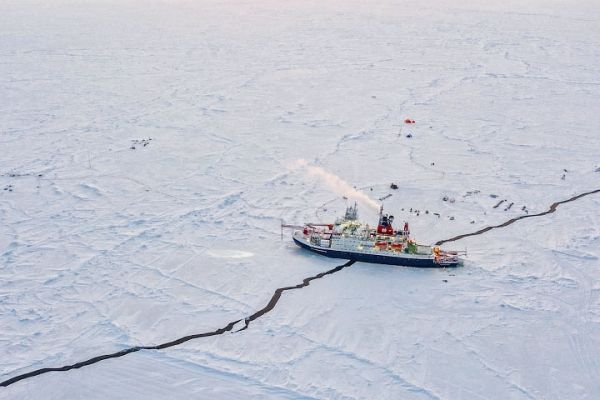They also pose challenges for ship-based researchers participating in the MOSAiC expedition.
In September 2019, the German research icebreaker Polarstern left Norway and cruised toward the heart of the Arctic Ocean. The purpose: Spend a year frozen into the sea ice while scientists onboard make measurements of the effects of climate change. Now about halfway through the Multidisciplinary drifting Observatory for the Study of Arctic Climate (MOSAiC) expedition, the icebreaker has weathered the dark polar winter and daylight has started to return.
On March 11, 2020, the low Sun angle helped produce the striking orange and blue tones on the frozen landscape in the aerial photograph above (top image). Acquired via drone by Manuel Ernst, a photographer and graphics editor, it shows the Polarstern as it drifted with the sea ice about 260 kilometers (160 miles) from the North Pole.
Continue reading at NASA Earth Observatory
Image via NASA Earth Observatory


